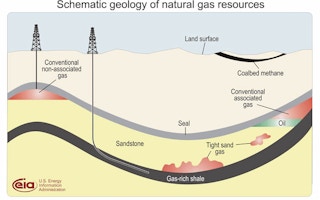China has begun trials of the controversial drilling technique known as fracking to exploit the world’s largest reserves of shale gas, as it tries to cope with the energy demands of a fast-growing economy while reducing its dependence on coal.
In the past two weeks, engineers have completed the country’s first horizontal shale gas well in Sichuan and government officials have begun drafting a national strategy to identify 1000 billion cubic metres of exploitable resources by 2020.
Supporters say China has the potential to emulate the US, where extraction of shale gas has tripled the lifespan of gas reserves and offered a lower-carbon alternative to coal.
”Shale gas is a game-changer for the US and should do the same for China,” said Ming Sung, the Asia representative of the Clean Air Task Force in Boston and an advocate of closer energy links between the two nations.
”This should be one of the centrepieces for China’s energy strategy. As with any new technology, we must balance benefits versus potential environmental impacts. The experiences of the US are valuable here.”
The extraction method is costly and controversial. Hydraulic fracturing, or fracking, involves the injection of chemically treated water at high pressure through seams of rock, forcing the gas inside to seep out to where it can be captured. Environmentalists say it wastes and contaminates huge volumes of water.
For fuel-hungry, drought-plagued China, this poses a conundrum. The energy potential is enormous. The ministry of land and resources calculates the size of shale gas reserves at 26,000 billion cubic metres - more than 10 times the known holdings of conventional natural gas. This is a tempting alternative for a country eager to improve its energy security.
A study released this month by the US Energy Information Administration said China’s technically recoverable shale gas reserves were almost 50 per cent higher than those in the US. But tapping them will be expensive and difficult for a country that is desperately short of water and - until recently - lacking experience in the key technologies.
Engineers from China National Petroleum Corporation took a big step towards rectifying the latter problem on March 23, when it opened the shale gas well three kilometres below the surface at Weiyuan in Sichuan province.
Production is limited and the returns unattractive given low gas prices and the high costs of exploitation. But the project was deemed a success because it proved the effectiveness of drilling equipment.
Executives at CNPC have said they aim to produce 500 million cubic metres of shale gas by 2015.
With other firms such as Sinopec, Shell and Chevron lining up to enter the business, the government is drawing up a national strategy that is likely to be incorporated into the latest five-year plan. Industry insiders are hopeful that it will include tax incentives and subsidies to develop shale gas reserves.










